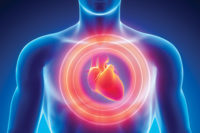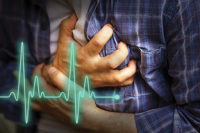AEDs in the workplace: An important life-saving technology

Automated external defibrillators (AEDs) are an important lifesaving technology and may have a role to play in treating workplace cardiac arrest. Most sudden cardiac deaths occur outside of the hospital.
It is estimated that 5 percent or less of victims of sudden cardiac deaths are successfully resuscitated and discharged alive from the hospital. In a study of Public-Access Defibrillation (PAD), communities with volunteers trained in CPR and the use of AEDs had twice as many victims survive compared to communities with volunteers trained only in CPR. To assist in addressing AED issues, information is provided below regarding occupational risk factors and the use of AEDs in the workplace:
- Automated External Defibrillators Can Save Lives During Cardiac Emergencies. OSHA Publication 3174, (2001). Stresses the need for AEDs in the workplace to save lives. States that AEDs are effective, easy to use, and relatively inexpensive.
- Saving Sudden Cardiac Arrest Victims in the Workplace: Automated External Defibrillators (PDF). OSHA Publication 3185, (2003). Provides information on the importance of readily-available AEDs, and encourages the installation of the devices in workplaces. Also includes a list of resources for more detailed guidance on the use of AEDs as well as how to obtain qualified training.
- Best Practices Guide: Fundamentals of a Workplace First-Aid Program. OSHA Publication 3317, (2006). Presents a summary of the basic elements for a first-aid program at the workplace and includes information on automated external defibrillators and programs.
- Automated External Defibrillation in the Occupational Setting. American College of Occupational and Environmental Medicine (ACOEM) Position Statement, J Occup Environ Med. Volume 54, Number 9, (September 2012). Provides position statement of ACOEM written by Larry M. Starr, PhD, and guidance for the use of AEDs in occupational settings.
- Learn About Automated External Defibrillators. American Red Cross. Includes information on AED training programs, and the benefits of having an AED at your facility.
- Occupational Heart Disease. National Institute for Occupational Safety and Health (NIOSH) Workplace Safety and Health Topic. Addresses many of the hazards associated with occupational risks of coronary heart disease.
Source: OSHA
Looking for a reprint of this article?
From high-res PDFs to custom plaques, order your copy today!







